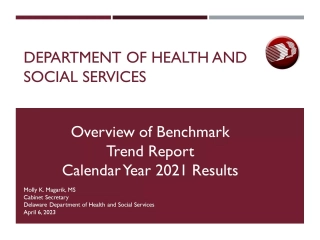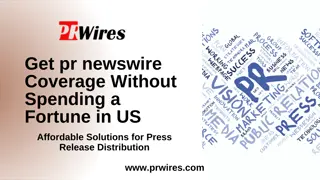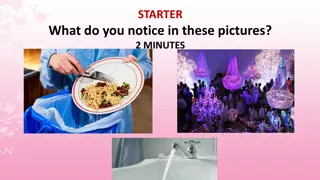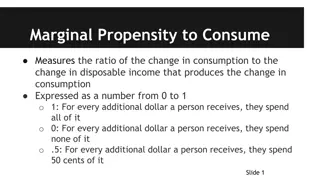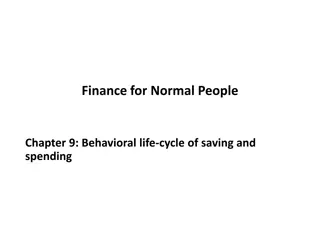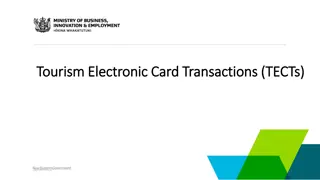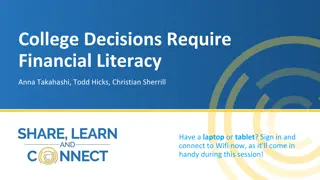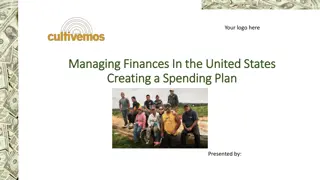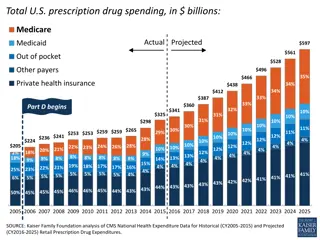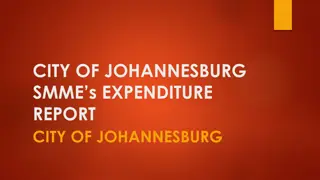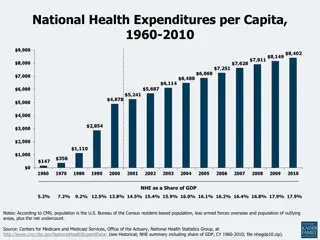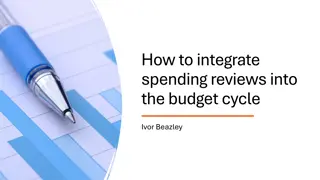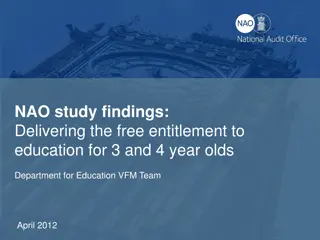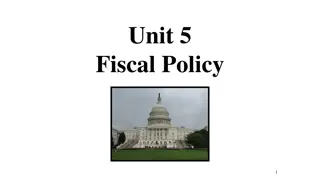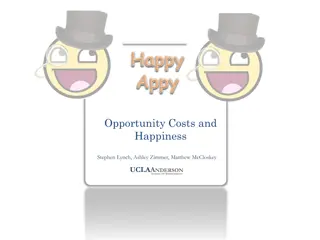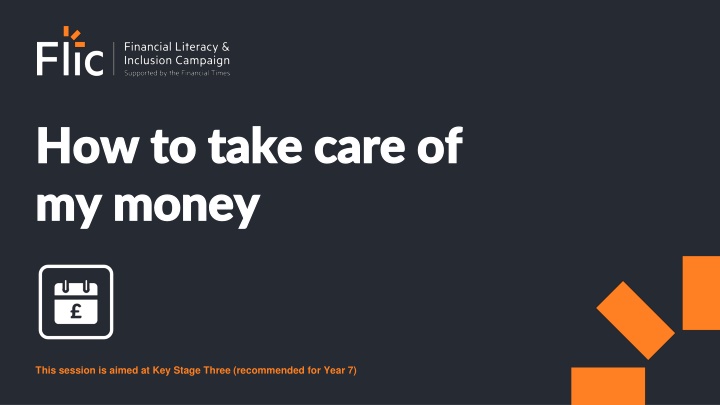
Financial Literacy and Budgeting Lesson for Key Stage Three
Engage in a session focused on financial literacy and budgeting for Key Stage Three students, covering topics such as spending decisions, needs vs. wants, and evaluating influences on financial choices. Explore the FLIC initiative by the Financial Times and maintain a respectful learning environment. Unit outline includes sessions on critical consumerism, budgeting, inflation, and job readiness. Get ready to enhance your financial knowledge!
Download Presentation

Please find below an Image/Link to download the presentation.
The content on the website is provided AS IS for your information and personal use only. It may not be sold, licensed, or shared on other websites without obtaining consent from the author. If you encounter any issues during the download, it is possible that the publisher has removed the file from their server.
You are allowed to download the files provided on this website for personal or commercial use, subject to the condition that they are used lawfully. All files are the property of their respective owners.
The content on the website is provided AS IS for your information and personal use only. It may not be sold, licensed, or shared on other websites without obtaining consent from the author.
E N D
Presentation Transcript
How to take care of How to take care of my money my money This session is aimed at Key Stage Three (recommended for Year 7)
What is FLIC? What is FLIC? The Financial Times news group has set up a charity (Financial Literacy and Inclusion Campaign) focused on building up the financial knowledge and skills of everyone in the UK, especially the people that don t usually come across this information.
Having a respectful learning environment Having a respectful learning environment We will listen to each other respectfully We will avoid making judgements or assumptions about others We will comment on what has been said, not the person who has said it We won t put anyone on the spot and we have the right to pass We will not share personal stories or ask personal questions If there is a question that you do not wish to ask aloud, you can write it on a Post-it Note which will be collected throughout the session and answered at the end
Unit outline Session 1 Session 2 Session 3 Session 4 Session 5 Session 6 Being a critical consumer Spending decisions How to budget The impact of inflation Budgeting for a holiday Getting a job
Session 1: Spending decisions Spending decisions
By the end of the session, I will be able to: Distinguish the difference between financial needs and wants Assess personal and external influences affecting spending decisions Evaluate how spending decisions may impact the environment and other people
Starter | Define the keywords Zara is having to make some spending decisions. First off she s been advised to think about what a need is, what a want is and what her priorities are. Can you help her define these words? A want is A need is Priorities are
Starter | Define the keywords Zara is having to make some spending decisions. First off she s been advised to think about what is a need, what is a what and want her priorities are. Can you help her define these words? Keywords Needs Wants A want is Priorities External influences A need is Priorities are Values Something that are essential and that people must have to be healthy and safe. Things people consider more important than other things. Something people would like to do or have. They are not essential.
Needs and wants - Poku Banks Watch the following video. Needs vs wants Needs vs Wants Made in collaboration with Poku Banks: How can you tell what is a NEED from what is a WANT when it comes to buying things? What are the three questions Poku asks that can help you decide what is a need compared to a want? Poku Banks: Needs vs wants
Activity | Needs vs Wants Draw a table and categorise the items in the word bank into needs and wants Can you think of any other items that are important to you? Add them to your table in a different colour Word Bank Needs Wants 6. Electricity bills 11. Latest iphone 1. Haircut School uniform Electricity bills Netflix subscription 7. Designer trainers 12. Basic trainers 2. Laptop 13. Donations/ giving to charity 8. School uniform 3. Car 4. Netflix subscription 9. Lunch out 14. Cinema 10. Weekly food shop 5. Mobile phone 15. Headphones
Needs and wants vary from person to person Needs Wants Now compare with the person next to you. School uniform Electricity bills Netflix subscription Which are the same and which are different? Why might this be? Have you categorised your items in the same way? Electricity bills Weekly food shop Lunch out Lunch out
Needs and wants vary from person to person Now compare with the person next to you. Have you categorised your items in the same way? Which are the same and which are different? Why might this be? It s important to recognise that people have different values and priorities. These will also be clear when we talk about things relating to money, so we need to be respectful of our peers opinions. Needs Wants Netflix subscription School uniform Electricity bills Netflix subscription Car Netflix subscription Electricity bills Weekly food shop Lunch out Lunch out
By the end of the session, I will be able to: Distinguish the difference between financial needs and wants Assess personal and external influences affecting spending decisions Evaluate how spending decisions may impact the environment and other people around me
Personal influences There are lots of things that will affect how someone spends their money. They can be categorised into personal and external influences. Here are some personal factors: What someone needs at the time What someone wants at the time How someone enjoys spending their time e.g. hobbies What somebody cares about e.g. animal welfare Special occasions coming up e.g. religious holidays Plans for the near future The amount of money someone has
External influences External influences Feeling FOMO? Biggest influence Fear of missing out Social media Family There are also lots of external things that influence our spending. Friends Celebrities 1. Can you rank these influences in order of highest to lowest importance? 2. Are there other influences that you can think of? Put them on your scale. TV programmes Designer brands Adverts Smallest influence STRETCH | How would your ranking be different if you were a different consumer e.g. adult, teenager, young child?
By the end of the session, I will be able to: Explain the difference between financial needs and wants Assess personal and external influences affecting spending decisions Evaluate how spending decisions may impact the environment and other people around me
Social and environmental impacts We ve looked at spending decisions based on our needs and wants. But sometimes we make decisions based on how they impact people around us or the environment. These spending decisions take into account our values. This is known as conscious consumerism. What are some of the ways we can make decisions taking into account people around us and the environment?
What are the pictures telling us? How important is this issue to you? Rate it on a scale of 1-10 in your books 1 10
What is a conscious consumer? What is a conscious consumer? Did the advert make you buy it? This video looks at some of the techniques used by companies to entice you into buying things you do not need. Video | Did the advert make you buy it?
What are the pictures telling us? How important is this issue to you? Rate it on a scale of 1-10 in your books 1 10
What are the pictures telling us? How important is this issue to you? Rate it on a scale of 1-10 in your books 1 10
Case study | Zaras weekend Literacy resource Read through the text on Zara s weekend. Label or highlight in different colours all of her spending decisions that involve purchasing a need, a want, and those that consider people around her and/or the environment. Highlight preventable purchases in blue. Would you change any of Zara s spending decisions? Lesson 1 Worksheet 1 | Zara s weekend
Answers | Zaras weekend Zara had a lie-in on Saturday morning. She got up at 10:00am and went to the supermarket with her mum to help her do the weekly family food shop. Zara and her mum began by buying eggs, bread, milk, lentils and a range of fruit and vegetables. Then Zara spotted her favourite sweets and added them to the shopping trolley. When they had ticked off picking up all of the items on their shopping list they went to the till, where Zara pulled out a big recycled bag to collect the shopping and take it home. However, because of the amount of food they bought as their cousins were staying over for the weekend, the bag wasn t big enough so they had to purchase an additional plastic bag. Plastic bag The purchase could have been avoided had Zara brought an extra bag. Santander bike Zara chose to ride a bike over. This could have been a want as perhaps she could have walked, but it s an environmentally- friendly choice nonetheless. Once home, after spending the afternoon helping her brother and mum cook dinner for the whole family, Zara went round to her friend, Ali s house, as he was was celebrating his birthday. She rented a Santander bike and tapped her phone in order to pay for the rental. While she was cycling, she got hot and realised that she left her reusable bottle of water at home. She happened to be passing a corner store so she decided to stop and purchase a plastic bottle of water with cash. When she received her change, she noticed a charity box for a homeless charity and put in her leftover change. When she arrived she gave Ali a birthday card and gift. Although she had wanted to buy him new headphones as his had recently broken, she had to use her weekly babysitting allowance, and so bought him a phone accessory instead which she could afford. Plastic bottle of water Zara left her refillable bottle of water at home . Had she remembered it she could have avoided buying the plastic bottle. The following day, Zara went with her sister to the uniform shop to buy a new school shirt as she d outgrown her old one. While browsing the shops she noticed a pair of trainers that she d really wanted for a long time. However, she realised she didn t have enough money so decided to save up a portion of her weekly babysitting income to buy the trainers in the future
Reflection | Smart financial planning Smart financial planning means making sure your needs are taken care of first and using what s left over for your wants. 1. Review your list of needs and wants 2. Based on your learning add any additional wants and needs that are important to you. Then prioritise your top six wants and top six needs under the heading of My most important needs and wants , taking into account your learning of social and environmental considerations 3. Choose an example of a need and a want and explain how these may change over time
By the end of the session, I will be able to: Explain the difference between financial needs and wants Explore personal and external influences affecting spending decisions Evaluate how spending decisions may impact the environment and other people around me
Any questions? Any questions? ?
Services available for people who have concerns about their personal finances Citizens Advice Debt and Money This resource contains links to advice on a number of topics, including financial difficulties, cost of living and communicating with creditors. Childline Helpline 0800 1111 National Debtline Debt and Money a debt advice charity run by the Money Advice Trust, offering a free and confidential debt advice service. At school, you can speak with an adult you trust. This could be your form tutor, head of year or the school s safeguarding officer.
Links to learn more! Links to learn more! Articles to extend learning Articles to extend learning Please visit the FLIC Learning Hub for further resources 1. 2. 3. BBC Green Friday: The eco-friendly alternative to Black Friday (2022) Financial Times On a mission to solve fashion s environmental problem (2022) CBC For Gen Z, sustainable fashion isn't just about shopping. It's a 'mindset' (2024)

